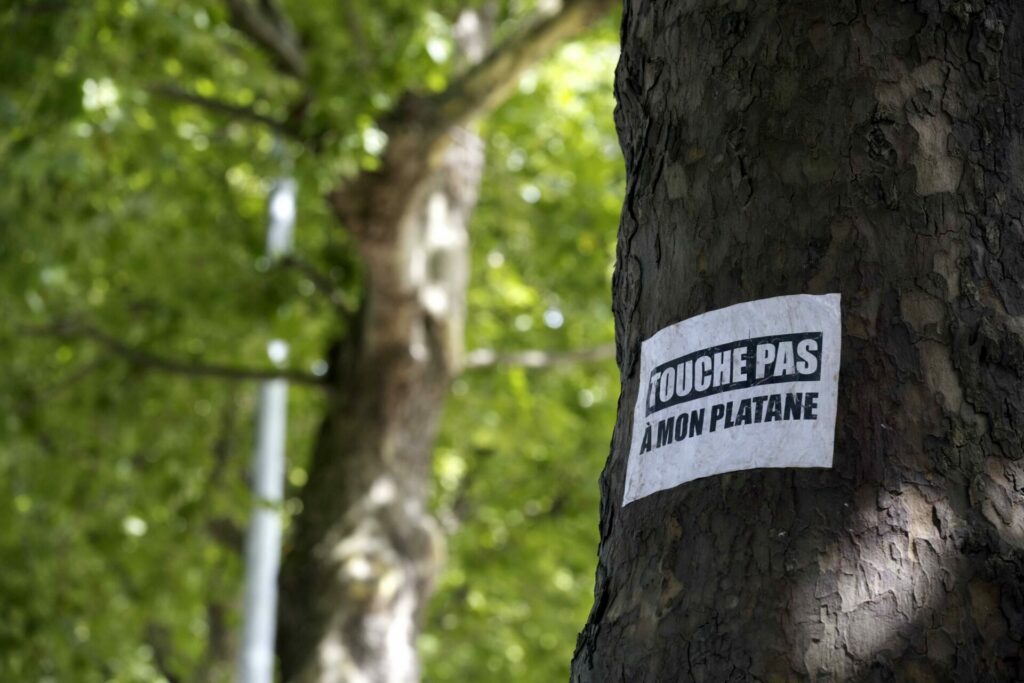Trees have been hailed by the Brussels government as the answer to making the region more resilient to climate change. Yet one citizens' collective has argued that the region's lack of coherent approach has led to a reduction in tree population.
HELP4TREES – a coalition of several citizens' collectives and associations – with the help of Brussels' OpenPermits database, found that over 62,000 tall trees have been felled in the region since 2010. Of these, more than 25,000 trees have been felled in the past five years, sometimes illegally without any permits. This does not include the felling carried out in Forêt de Soignes – the region's largest green space.
The apparent disregard for trees is out of step with the climate law adopted by the region in 2021 which declares a climate and environmental emergency and was signed by the communes. "Despite all this, the frantic felling of tall trees continues to be authorised in the absence of reasoned and coordinated information on the Region's tree heritage," HELP4TREES noted.
During the same period, only 3,254 trees were planted across the region. It takes 25 years for a replanted sapling to produce the same benefits as a tall tree, which is "too long (to wait), given the rate of climate change".

"Hands off my plane tree": a citizens' action against felling on Avenue Du Port in Brussels. Credit: Belga
"Public authorities often claim that replanting compensates for felling trees, but nothing could be further from the truth. If you decide to cut down a tree, you are immediately depriving yourself of the many benefits it provides over the long term."
Given that one tall tree provides around 50 m² of canopy, the tree cover lost in 13 years has created 3.2 km² of additional heat zones in the city.
What communes felled the most trees?
Uccle – one of the greenest communes in Brussels – is also the most affected by tree felling: 14,635 trees were cut down here since 2010. The City of Brussels is in second place with a loss of 12,400 – a large proportion of which were in the green Laeken district.
Watermael-Boitsfort and Woluwe Saint-Pierre are also fertile land for tree surgeons, with 5,466 and 5,141 (for just 1,881 felling permits) cut here.
HELP4TREES fears for the planned felling of 208 trees in Brussels City, 107 in Ixelles, and 109 in Watermael-Boitsfort. It says that over 3,000 felling permits have been delivered to the competent authorities since 2019 and warns that "more than 2,700 trees are at risk of disappearing."
The collective argued that most felling is carried out under pressure from the public authorities, adding that many of these communes are taking tree-related initiatives on their own. This fragmented approach – 22 institutions independently manage Brussels' trees – is a "direct threat" to the capital's tree heritage.
Related News
- Over 14,000 plants to be added along the Brussels Canal
- The measures being taken to boost Brussels’ rich plant and wildlife
Since government bodies and municipalities do not pool data, it is difficult to create an overview of the city's tree population.
HELP4TREES stressed that the region urgently needs to work towards a unified regional tree policy and a regional service that has sole central responsibility for Brussels' tree stock. It added that tools easily accessible to citizens are needed to closely monitor changes in the tree stock, such as a tree register.
"In the absence of a regional tree register, municipalities and the Region are taking felling decisions blindly." The cabinet of Brussels Minister for Climate Transition and Environment Alain Maron has not responded to the collective's request.

